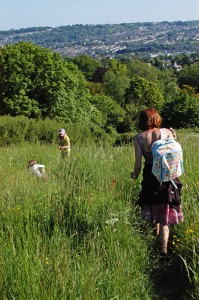Support us from £3/month
We deal with almost 1000 cases a year assisting communities, groups and individuals in protecting their local spaces and paths in all parts of England and Wales. Can you help us by joining as a member?
Our general secretary, Kate Ashbrook, writes about worrying changes in legal opinion.
Fifteen years ago the Sunningwell case clarified the law on village greens in the public interest. Since then a series of cases has gone the same way—but now the tide has turned.
Already this year we have had three judgments about greens in the supreme court and one in the court of appeal. All have gone against the public and have endangered both the greens with which they were directly concerned and others for which they will serve as precedents.
In the most recent case, known as Barkas, the supreme court has ruled that, where land is held by a local authority under the Housing Act 1985, the public has a statutory right to use it for recreation; but that use is ‘by right’ and not ‘as of right’. The land thus does not qualify as a green.
Permission
Worse still, the supreme court has pooh-poohed a ten-year-old judgment in the House of Lords, Beresford. This held that acceptance by the authority of the use of its land by the public did not necessarily mean it had given permission (thus killing any green application). In Beresford the land was not held for public recreation, and the judgment has been cited repeatedly in defence of registration, especially on public-authority land. But now, in the words of Lord Carnwath, its reasoning ‘should no longer be relied on’.
So this makes it even more difficult to register local-authority land as a green.
We have yet to discover the extent of potentially registrable land owned by the authorities, but we can be sure that here is another severe blow to the public.
The opportunity to register greens was seriously diminished by the 2013 Growth and Infrastructure Act’s triggers which prevent registration where land is subject to a planning-related event. That law was introduced on the basis of dogma not evidence, Defra has not produced the figures to prove that people abuse the law to stop development. But facts are not on this government’s radar.
Mitigation
There was supposed to be mitigation. The Growth and Infrastructure Bill’s impact assessment stated that, in exchange for the loss of opportunity to register greens, ‘local communities can give special protection to green areas of particular importance to them by designating such areas as Local Green Space in their local or neighbourhood plans.’
There are nine adopted plans and hundreds more in the pipeline, but we know of no new green spaces that have been designated. Government has given scant guidance, few local authorities promote them and the public remains ignorant of how to win them.
That’s why our list of policies for the 2015 election focuses on rescuing green space—for enjoyment, health and well-being. The next government must operate on evidence not prejudice.

